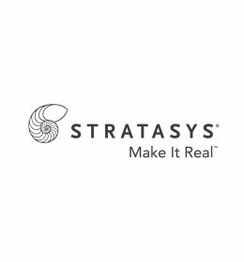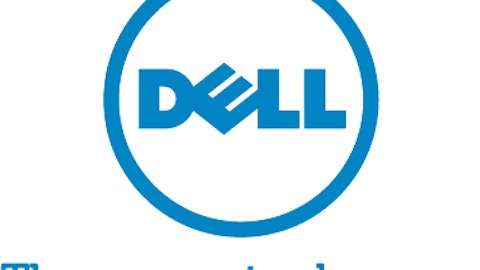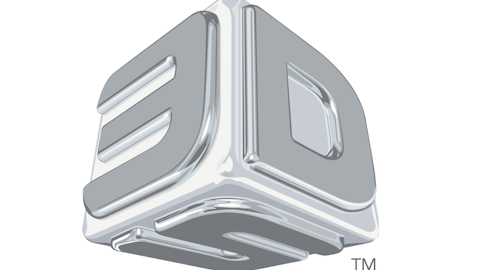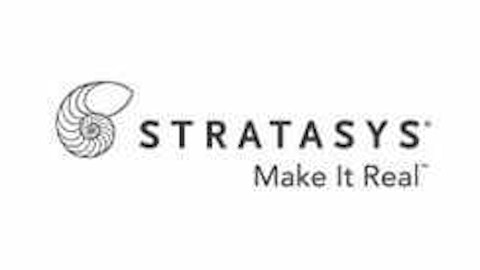Even before it grows up, the 3D printer market is rapidly consolidating among two companies, Stratasys, Ltd. (NASDAQ:SSYS) and 3D Systems Corporation (NYSE:DDD).

Stratasys gets a low end
MakerBot apparently moved in with Stratasys, Ltd. (NASDAQ:SSYS) in part because 3D Systems Corporation (NYSE:DDD), based in Rock Hill, South Carolina, already has a low-cost printer called the Cube, sold in Staples stores. The MakerBot costs almost twice as much as the Cube.
Stratasys, Ltd. (NASDAQ:SSYS) itself was formed just last year through the merger of a Minneapolis company called Stratasys, Ltd. (NASDAQ:SSYS). and Objet, an Israeli company. Yahoo! finance indicates trailing year revenue for Stratasys, Ltd. (NASDAQ:SSYS)of $267 million, which when set against a market cap of $3.27 billion, indicates a trailing-year price-to-sales ratio of well over 10.
The numbers are 3D’s
The industry’s growth rate can be better understood by looking at 3D, which has been public longer in its present configuration and thus has comparables you can look at.
At its present valuation of $4.27 billion, 3D Systems Corporation (NYSE:DDD) has a Price/Earnings (PE) multiple of over 97, and with $353 million in 2012 sales also has a price-to-sales ratio of about 12. Its March quarter sales of $102 million were about 25% ahead of the same quarter in March, when it brought in just under $78 million.
That’s not usually the kind of growth rate that would bring in that kind of multiple. What’s comforting for investors is that there are any profits at all – $5.88 million in the March quarter. The assumption is that you’re guaranteeing yourself a place in a paradigm-shifting market, something that’s currently a niche and has yet to rush through the heart of its growth curve. Like Apple before the iPod, but know that the iPod is out there.
Management at 3D has been working conservatively on their books even while buying out other companies aggressively. It made 16 acquisitions in 2011 alone, taking its debt-to-assets ratio over 25%, but slowed the pace in 2012 and gradually brought it down to its present level of under 10%. The company is not yet a huge generator of cash, however, and had just $110.54 million in cash on its books at the end of March.
The nature of the market
While products like MakerBot’s Replicator 2, for which it just built a factory in Brooklyn, NY, and the 3D Cube are the sizzle, the steak is in a wide variety of higher-priced products made for specialty industrial markets, ranging from dental implants up to jet parts.
The consumer products simply liquify a plastic wire and deposit them, precisely, according to the computer drawing of the product being made. (The technique is called Fused Deposition Modeling, or FDM.) The printing platforms may be no more than a foot on any side, which greatly limits what can be made.
For industrial products there are a wide variety of techniques. Some burn through metal with lasers. Others use lasers to fuse powders, and still others use electron beams to melt metal and deposit it in a manner similar to FDM systems. A system called CandyFab deposits sugar grains on cornstarch then uses hot air to fuse them, creating custom candies.
The point is this is an industrial market, not a consumer market, and is going to remain primarily an industrial market for some time, due to the wide-ranging capabilities of the technology. A 3D printer can be used for rapid prototyping or, as in the case of dental implants, the rapid production of actual products.
XOne frothier
While both Stratasys and 3D Systems Corporation (NYSE:DDD) have earned market caps in the $3-4 billion range, this does not mean both aren’t vulnerable to takeover. At their present prices, for instance, they’re absolute bargains in comparison to ExOne Co (NASDAQ:XONE), another 3D printing company that went public last year, and is worth $661 million with just $18 million in sales.
ExOne Co (NASDAQ:XONE) focuses on sand and metal as its materials, and works on the top end of the industrial market, where individual sales can have an impact on its financial results. The company has been bid high on expectation of a takeover bid from one of the majors, or from a major industrial company looking to get into the 3D printing game.
Which major is right for you
You can buy either Stratasys or 3D Systems Corporation (NYSE:DDD) for growth or in hopes of a future takeover. But be warned – big companies like Hewlett-Packard Company (NYSE:HPQ) aren’t likely to be swooping in until they see a price that looks attractive to them, which is likely to come after the next big downturn in the market for these stocks. That came between January and March, climaxing after 3D held a 3-2 stock split, which took the share price below $20. It’s currently near $44.
I currently hold 3D Systems Corporation (NYSE:DDD) in my own portfolio. I bought 100 shares of the company last November, added 50 shares after the split, and I’m presently up $2,400 on a $6,300 investment.
Your best strategy is to wait until the next time these stocks look pricey, then swoop in and buy them up at lower prices. That next leg down may now be starting – 3D dropped 5% in early trade on June 20. Buying time is coming.
Despite years of earnings growth, 3D Systems’ share price has risen even faster, and today the company sports a dizzying valuation. Given the recent weakness, now may be the time to get invested in this disruptive innovator.
The article Stratasys Buy Shows 3D Industry Getting Ahead of Itself originally appeared on Fool.com.
Dana Blankenhorn owns shares of 3D Systems. The Motley Fool recommends 3D Systems, Stratasys, and The ExOne Company. The Motley Fool owns shares of 3D Systems and Stratasys and has the following options: Short Jan 2014 $36 Calls on 3D Systems and Short Jan 2014 $20 Puts on 3D Systems. Dana is a member of The Motley Fool Blog Network — entries represent the personal opinion of the blogger and are not formally edited.
Copyright © 1995 – 2013 The Motley Fool, LLC. All rights reserved. The Motley Fool has a disclosure policy.



